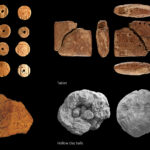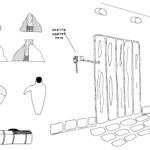The world's first system of bureaucratic recording was developed during 3700-2700 BCE by the societies of ancient Mesopotamia (Iraq and NE Syria). In the context of the development of the earliest cities and states, elite groups used sophisticated recording methods to control the production, storage and redistribution of many commodities, including land, crops, animals, people and other resources. Fortunately for the archaeologist and historian, the physical medium employed by these early bureaucrats was clay, which they modelled into three major forms: (1) tokens used in counting, (2) sealings bearing seal impressions, used to secure storage facilities such as pots, baskets and storeroom doors, and (3) tablets bearing seal impressions, number signs and pictographic signs in the so-called proto-cuneiform style. This integrated system of counting, sealing, and writing with clay was so successful that it endured for more than 3000 years as the bureaucratic framework across Mesopotamia and adjacent regions of the ancient Near East.
In the States of Clay project, we are developing and applying an integrated scientific methodology to the full spectrum of clay bureaucratic objects, or CBOs, to maximise their interpretive potential for understanding early urban and state level societies of Mesopotamia. Our focus is on the millennium 3700-2700 BCE, when major sites such as Uruk (often cited as 'the world's first city'), Ur, Jemdet Nasr, Fara, Brak, Nineveh and many others rose to prominence within networks of interregional engagement across Mesopotamia and adjacent regions. While all these centres used CBOs to administer their resources in a range of ways, they each developed divergent patterns of CBO usage through space and time. In this project we are articulating these patterns of clay use across a thousand years of urban rise and fall, region by region. In so doing, we address major societal issues, including (1) the significance of gender in use of CBOs, considering new evidence for a major role for females within ancient bureaucracy, (2) the choice and use of clays for specific roles city by city across Mesopotamia, interrogating evidence for mobility of CBOs within and between contemporary settlements, and (3) the associations of CBOs with contextual evidence relating to their use, including within domestic households and within higher status contexts such as temples and palaces.






